Key takeaways:
- User feedback is crucial for understanding customer experiences and can lead to significant improvements when taken seriously.
- Building strong relationships with customers through open communication fosters trust and loyalty.
- Emotional insights from users often reveal deeper connections and opportunities for enhancement beyond numerical data.
- Applying feedback through targeted changes can improve user satisfaction and drive long-term growth.
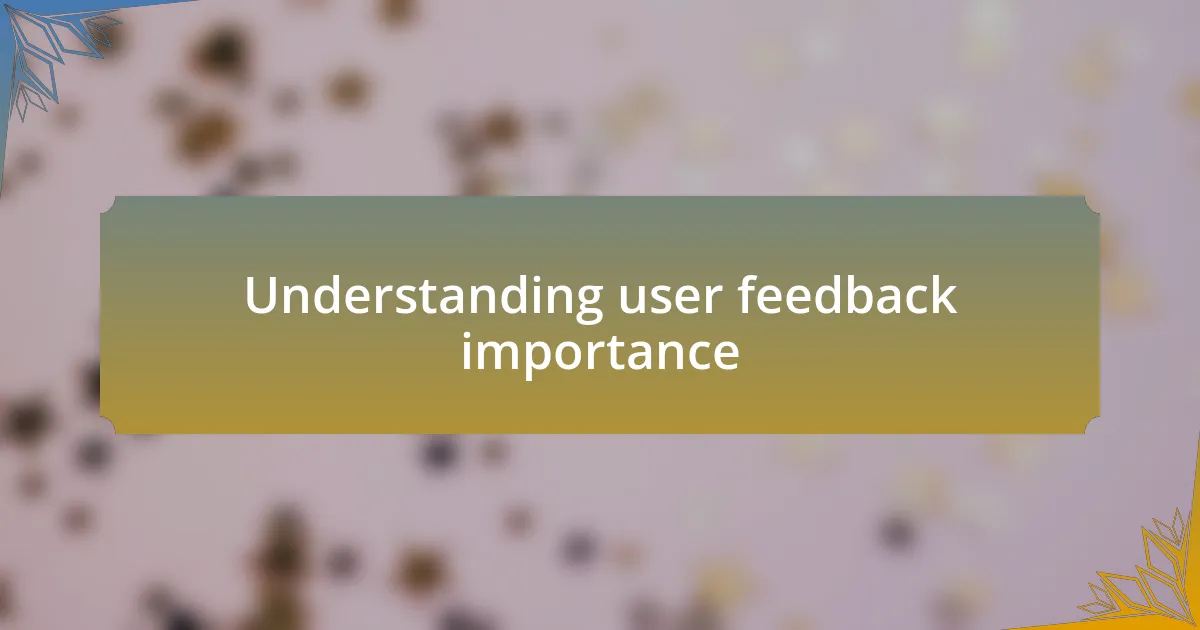
Understanding user feedback importance
User feedback is essential because it provides a direct window into what your customers are truly experiencing. I remember a time when my team implemented a new feature, convinced it was a game-changer. However, the feedback we received was a wake-up call; users found it confusing. This taught me that assumptions can lead us astray, and listening to our audience is what guides us back on track.
When I think about user feedback, I can’t help but see it as a relationship. Just like in any partnership, communication is key. If we disregard what our users are saying, how can we ever hope to grow? Engaging with their thoughts allows us not only to refine our offerings but also to build trust and loyalty. I’ve learned that the more open I am to feedback, the more empowered both the users and I feel.
Furthermore, emotional insights can be even more revealing than the data itself. I recall receiving an email from a frustrated user who felt unheard; their heartfelt message made me reevaluate our approach entirely. This personal touch reminded me that behind every bit of feedback is a person with valid needs and worries. How often do we ignore the emotional weight behind user comments? Embracing these feelings helps us create a user experience that resonates deeply.
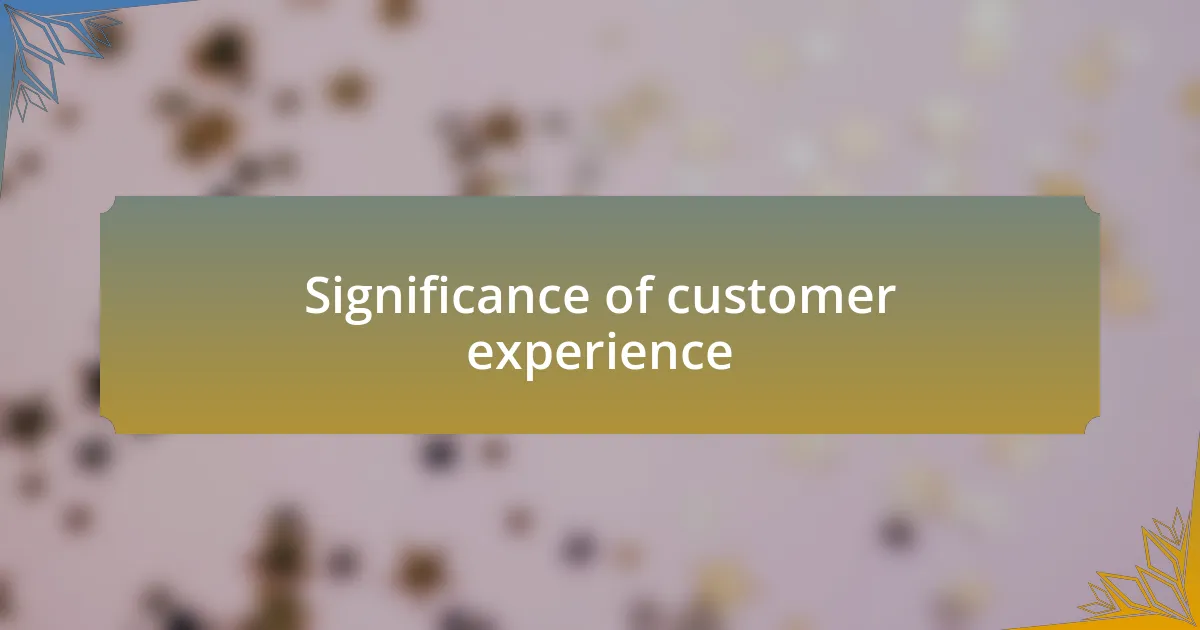
Significance of customer experience
The significance of customer experience cannot be overstated. During one product launch, I vividly recall the moment we received our first wave of user reviews; the enthusiasm in their voices was palpable. It was clear that the positive experiences shared by customers directly fueled our brand’s reputation, revealing that satisfied customers are often our best advocates. This experience solidified my understanding that every positive interaction can amplify our business success.
Customer experience extends beyond mere transactions; it builds relationships. I once engaged in a heartfelt conversation with a long-time customer who explained how our service had eased their daily struggles. This interaction made me realize that the value of customer experience lies in its ability to transform a product into a solution that genuinely enriches lives. How often do we take a step back to appreciate the emotional connections we create through our services?
Ultimately, I’ve learned that the significance of customer experience is a continuous journey. It requires a commitment to evolve based on feedback. For instance, after a particularly rough update, a loyal user reached out to share their frustration—not out of anger, but because they cared. Their feedback propelled us to take a closer look at our processes, proving that valuing customer experience can lead to unexpected improvements and deeper connections. Isn’t that what we all strive for—engaging with our customers in a way that goes beyond the surface?
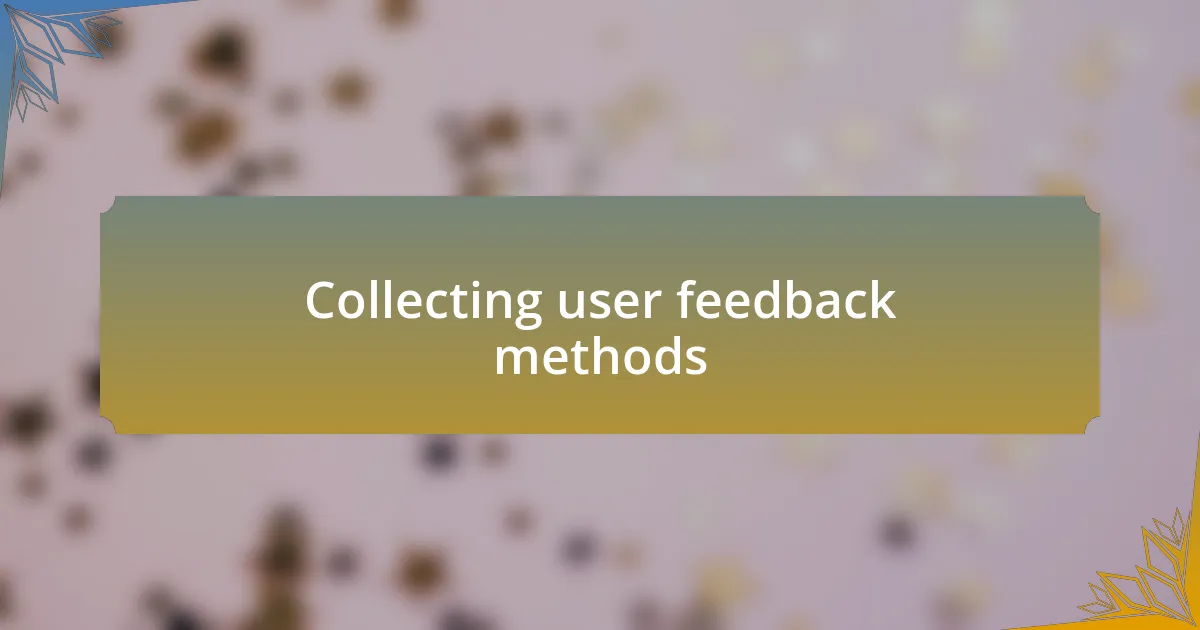
Collecting user feedback methods
Collecting user feedback can be approached through various methods, each offering unique insights. I recall implementing surveys after major updates; the responses often unveiled hidden user frustrations but also highlighted unexpected features they loved. It was intriguing to see how a simple question could unlock a treasure chest of honest opinions.
Another effective method I found is utilizing user interviews. Sitting down with a few customers for one-on-one conversations revealed their real-life experiences with our product. These discussions often sparked emotional revelations about how our service impacted their daily lives, emphasizing that user feedback is about more than just numbers—it’s about understanding the human story behind each interaction. Have you ever considered what drives your users’ loyalty?
Lastly, I have experimented with feedback forms incorporated into the website interface. It’s always fascinating to see how an unobtrusive prompt can encourage users to share their thoughts actively. I was pleasantly surprised by the depth of insights we received; sometimes it felt like users were eager to share their ideas as if they were part of our team. This collaboration not only provided us with actionable insights but also made our customers feel valued and heard. Isn’t it amazing when feedback transforms into a two-way conversation?
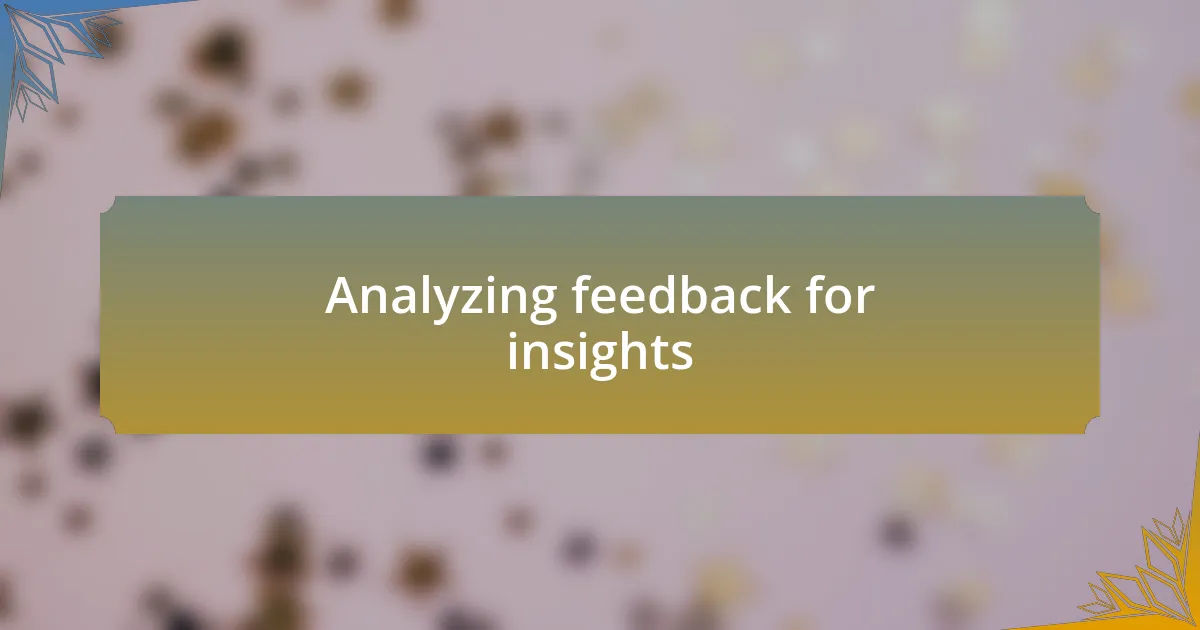
Analyzing feedback for insights
Analyzing user feedback is like piecing together a puzzle, each piece revealing a part of the larger picture. I recall a time when I was sifting through comments from focus groups; the initial frustration in their words gradually transformed into constructive suggestions. It made me realize that complaints often hide valuable insights just waiting to be uncovered, prompting me to re-evaluate our approach to product features.
One aspect that often stands out for me during analysis is identifying recurring themes. For instance, after several rounds of feedback analysis, customers consistently pointed out a specific navigation issue with our site. This pattern hinted at a systemic problem, prompting us to rethink our interface design. It’s intriguing how looking at feedback collectively, rather than individually, can spotlight critical areas that need attention. Have you ever noticed how much patterns in feedback can guide your strategic decisions?
Furthermore, I’ve found that sentiment analysis can be a game-changer. By employing tools to gauge the emotional tone behind customer reactions, I was able to identify not only what users wanted but how they felt about our brand as a whole. One memorable moment was when the analysis revealed overwhelming appreciation for our customer support team, which reignited our passion for maintaining that high standard. Isn’t it powerful to see how feedback transcends mere words and reflects the genuine emotions of your users?
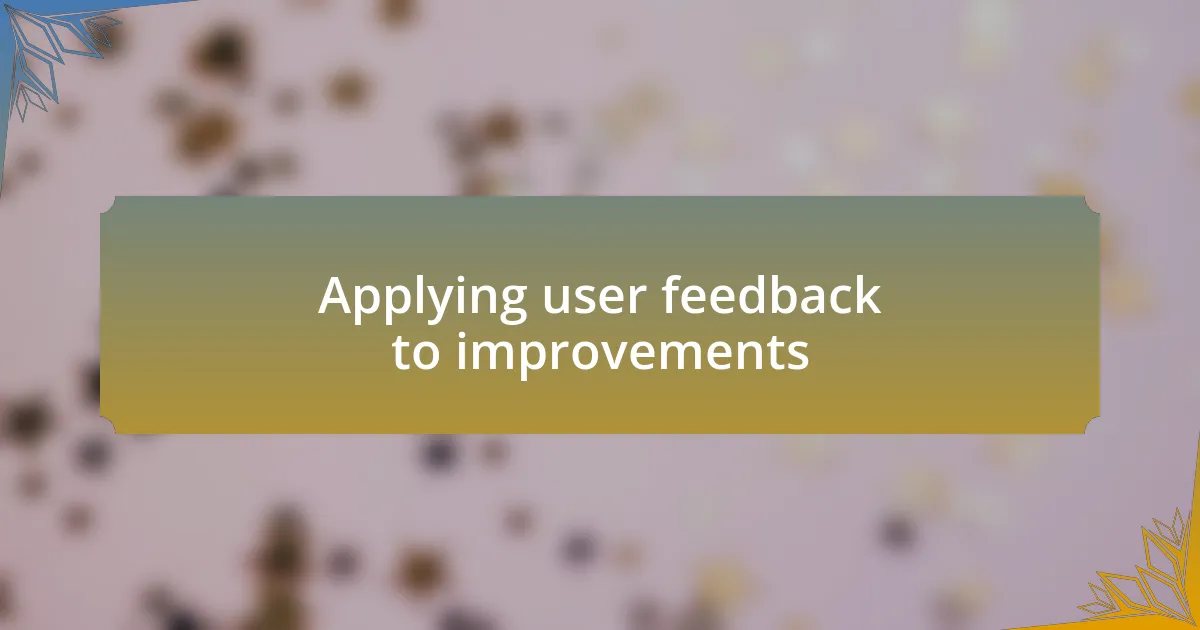
Applying user feedback to improvements
When it comes to applying user feedback, I’ve often found that the most impactful changes stem from a direct response to specific customer requests. Once, while reviewing feedback on our checkout process, I noticed a repeated mention of frustration over unnecessary steps. By streamlining the experience based on those suggestions, not only did we enhance user satisfaction, but we also saw a notable increase in completion rates. Have you ever wondered how a seemingly small tweak can lead to significant results?
I also believe in closing the feedback loop with customers. After implementing a feature based on user input, I reached out to those who had suggested it, sharing what we’d done. Their enthusiastic responses made it clear how valued they felt, reinforcing the importance of involving users in the development process. What better way to build trust than to show that you not only listen but also act on their insights?
Overall, I’ve learned that tracking user feedback over time can uncover long-term trends and areas for growth. For instance, I established regular feedback sessions, allowing us to adapt continuously. A recent session highlighted a desire for more personalized user experiences. I was excited to dive into that challenge, realizing that by truly understanding user needs, we can create solutions that resonate deeply and foster loyalty. Isn’t it fascinating how feedback can guide long-term strategic planning?

My learnings from user feedback
From my experiences, I’ve come to realize that user feedback often reveals insights I wouldn’t have considered on my own. For example, during a customer experience conference, someone shared concerns about the accessibility of our resources. It made me think about how often we take for granted our own perspective and how vital it is to ensure that everyone feels included. This personal moment reminded me that listening is just as important as making changes.
An emotional moment for me was when a user expressed that a minor adjustment we made significantly improved their workflow. They described how it saved them time and stress during a hectic workday. Hearing that made me appreciate the true impact of our work and the human element behind the data. Wouldn’t you agree that it’s incredible how a simple change can enhance someone’s daily life?
Regularly reviewing user feedback has also taught me the value of resilience and adaptability. When we previously received criticism regarding our navigation layout, it initially stung. However, understanding that these critiques were opportunities to grow led us to redesign our interface entirely. This shift not only addressed the concerns but also refined our overall strategy. How exhilarating is it to see a challenge transform into a stepping stone for innovation?